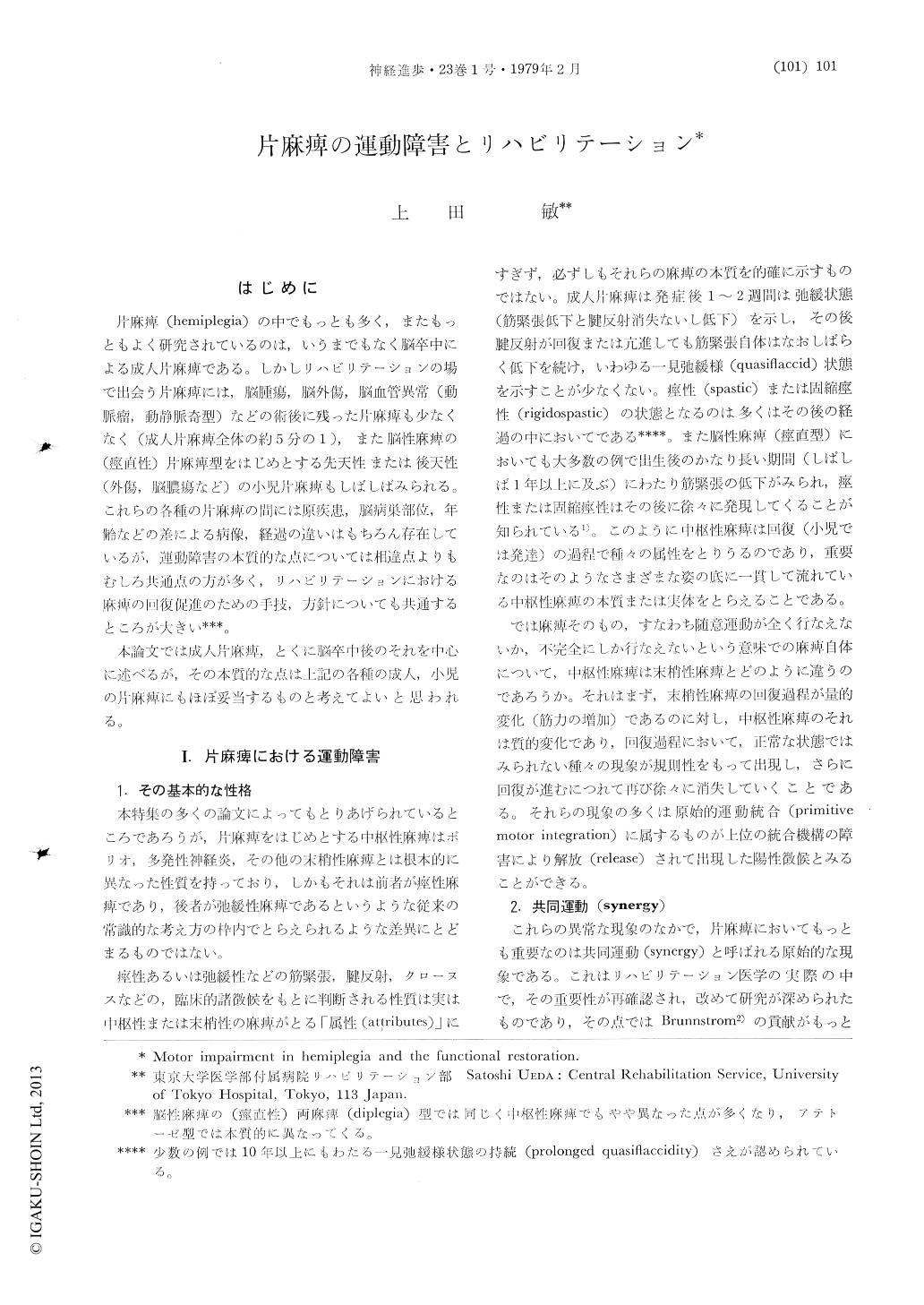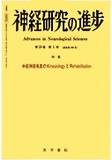Japanese
English
- 有料閲覧
- Abstract 文献概要
- 1ページ目 Look Inside
はじめに
片麻痺(hemiplegia)の中でもっとも多く,またもっともよく研究されているのは,いうまでもなく脳卒中による成人片麻痺である。しかしリハビリテーションの場で出会う片麻痺には,脳腫瘍,脳外傷,脳血管異常(動脈瘤,動静脈奇型)などの術後に残った片麻痺も少なくなく(成人片麻痺全体の約5分の1),また脳性麻痺の(痙直性)片麻痺型をはじめとする先天性または後天性(外傷,脳膿瘍など)の小児片麻痺もしばしばみられる。これらの各種の片麻痺の間には原疾患,脳病巣部位,年齢などの差による病像,経過の違いはもちろん存在しているが,運動障害の本質的な点については相違点よりもむしろ共通点の力が多く,リハビリテーションにおける麻痺の回復促進のための手技,方針についても共通するところが大きい***。
本論文では成人片麻痺,とくに脳卒中後のそれを中心に述べるが,その本質的な点は上記の各種の成人,小児の片麻痺にもほぼ妥当するものと考えてよいと思われる。
Abstract
I. Motor impairment in hemiplegia
The central motor impairment in post-stroke hemiplegia is characterized by the qualitative alterations of motor control, in contrast to quan-titative changes in peripheral nerve disorders. The most conspicuous feature in these qualitative alterations is abnormal synergy patterns, formerly described by Marie and Foix as syncinesie and by Foerster as Synergiebewegung. In addition to synergy, there appear other positive signs as associated reactions, postural reflexes, spasticity, rigidity and so on. The loss or impairment of normal equilibrium reactions is also important.

Copyright © 1979, Igaku-Shoin Ltd. All rights reserved.


